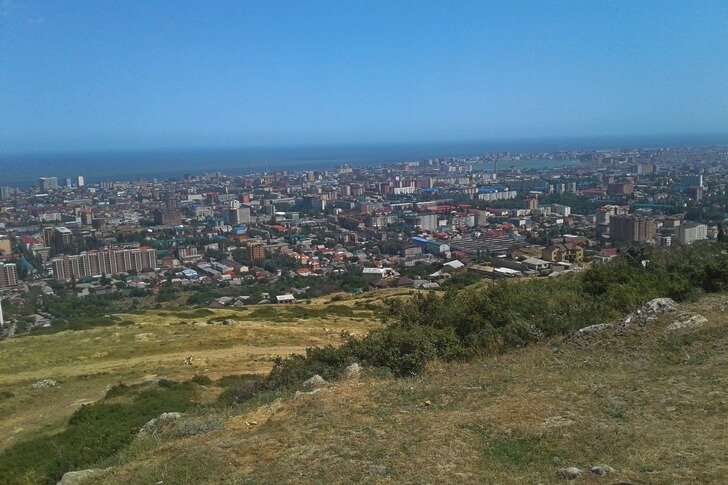The capital of Dagestan is based on the Caspian Sea. Here is the only non-freezing port of the Caspian Sea in Russia. In the vicinity of the city there are mountains, forests, lakes and even dunes. The nature around the city is breathtaking, even for experienced travelers. Some objects, for example, Mount Tarki-Tau, are in line for inclusion in the UNESCO World Heritage List. The reason is the huge species diversity of flora and fauna.
The streets of the city are moderately modernized: both buildings of the Soviet era and new buildings are nearby. Uninitiated tourists may be surprised at the number of theaters in Makhachkala. Some of them present performances in the languages of certain nationalities, for example, the Avar Theater named after Gamzat Tsadasa. But for the convenience of guests, simultaneous translation works.
What to see and where to go in Makhachkala?
The most interesting and beautiful places for walking. Photos and a short description.
- Lenin Square
- Central Juma Mosque
- Holy Dormition Cathedral
- National Museum of the Republic of Dagestan
- Russian Theater named after M. Gorky
- Kumyk Theater named after A.P. Salavatov
- Avar theater named after Gamzat Tsadasa
- Dagestan puppet theater
- Theater of Poetry
- Dagestan Museum of Fine Arts
- Museum of the History of the City of Makhachkala
- Monument to the Russian teacher
- Monument to Makhach Dakhadaev
- Barkhan Sarykum
- Tarki-Tau
Lenin Square
Located in the city center in front of the administration building. The area took its current shape by 1952. In the past, the Alexander Nevsky Cathedral towered on this site, which was demolished. For a short time the square was named after Stalin. The main street of Makhachkala, Rasul Gamzatov Avenue, originates from here. A monument to Vladimir Ilyich is erected here, and there are many green spaces around.
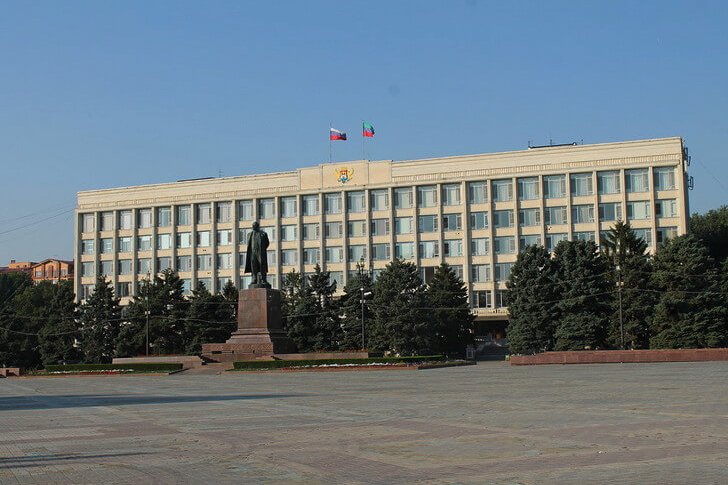
Central Juma Mosque
The main mosque of Makhachkala was built in the image of the Blue Mosque of Istanbul. The project was financed by the Muslims of Turkey. The original building was smaller than the current one. The area was increased in 2007 - 10 years after the opening. Money for the improvement of the territory was collected with the help of a telethon. The floor in the main hall is covered with a green carpet with markings: to make it more comfortable for those who pray. The walls are covered with quotes from the Koran.

Holy Dormition Cathedral
Only this Orthodox church has been preserved in the city. It was built at the very beginning of the 20th century. Services were not held from the coming to power of the Bolsheviks until the 1940s. Gradually, Christians began to leave the republic, but the cathedral continued to function. In 2004, a chapel of St. Alexander Nevsky was added. The walls were also repainted and the iconostasis was renewed. Restoration work was carried out by local artists.
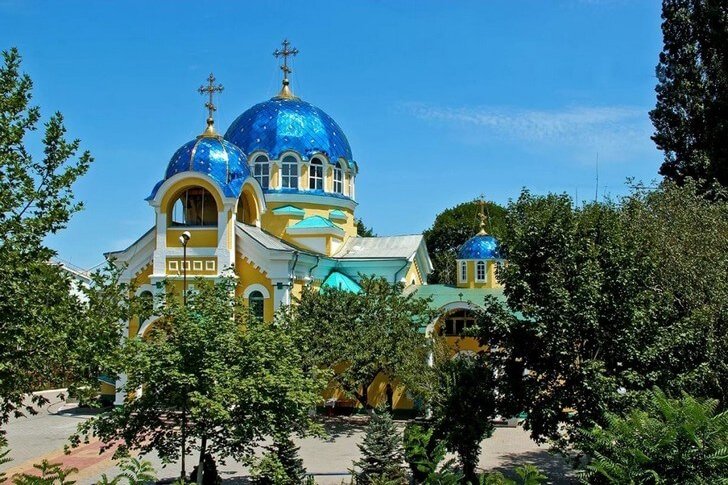
National Museum of the Republic of Dagestan
It was created in 1923 and is the largest of its kind in the North Caucasus. The museum has 38 branches, and the total funds of all institutions under its auspices amount to 170,000 items. The exposition includes: archaeological finds, ancient manuscripts, collections of paintings, objects of arts and crafts. It has been renamed several times in its history. It has had its current name since 2017.
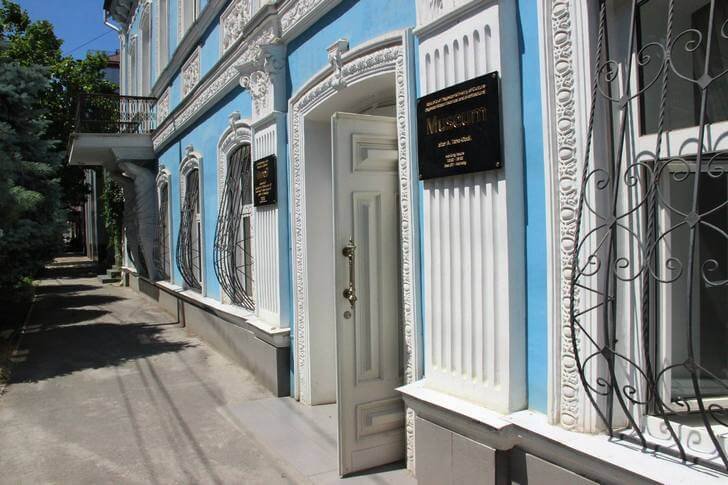
Russian Theater named after M. Gorky
The first professional theater in Dagestan opened in 1925. Under him, a drama studio was created. Debut productions - plays based on masterpieces of domestic and world classics. Now the theater repertoire consists of works for all ages. Every season, the audience is waiting for the premiere, but the team does not depart from traditional performances. The troupe actively tours the North Caucasus and participates in festivals.

Kumyk Theater named after A.P. Salavatov
Founded in 1925. The first official performance was played only 5 years later. In the period from 1932 to 1943 he was based in Buynaksk. In 1955, the theater was named after Salavatov, the founder of Dagestan drama. The troupe acquired a new building only at the very beginning of the 21st century. Both national Kumyk works and world classics are staged, but translated by local playwrights.

Avar theater named after Gamzat Tsadasa
Although the troupe was formed in 1935, the theater moved to Makhachkala only in 1968. He occupies the same knowledge as at the moment of his appearance in the city. For its time, the structure was almost futuristic. Its façade is very different from the typical ones. The foyer is decorated with mosaic frescoes. Performances are traditionally in the Avar language, but there is a simultaneous translation system.
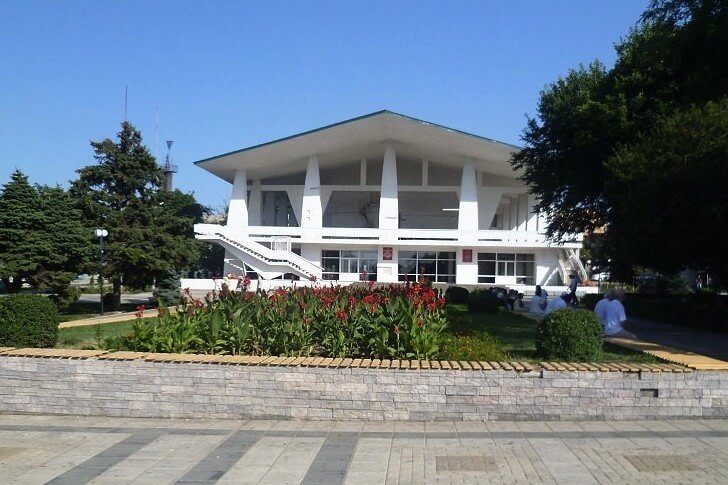
Dagestan puppet theater
The group of puppeteers merged into a theater troupe in 1941. There are different works in the repertoire, but the most popular ones are based on Russian folk tales. On the basis of the theater there is a competition of readers. Every year for several weeks meetings of children and artists are arranged. The theater building looks like a castle because of the two towers located on either side of the entrance.

Theater of Poetry
The youngest theater in the city. It opened its doors to the audience in 2015. In the past, this building housed a library and an ethnographic complex. The first floor is reserved for the exhibition hall. Local artists and photographers exhibit here. The stage is on the second floor. The hall can simultaneously accommodate about 100 people. The activity of the theater is connected with the popularization of poetry and literature in general.
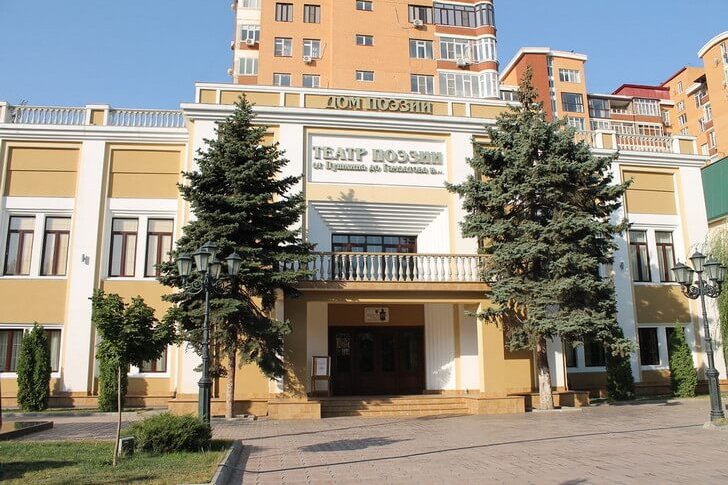
Dagestan Museum of Fine Arts
Independently working since 1958. The collection was detached from the local history museum. The collection was replenished with donations from private patrons, as well as from the storerooms of Moscow. Under the leadership of P.S. The Gamzatov Museum became famous on the territory of the USSR and acquired a stable exposition. It currently bears her name. The building also houses a cinema hall, a lecture hall and a gift shop.
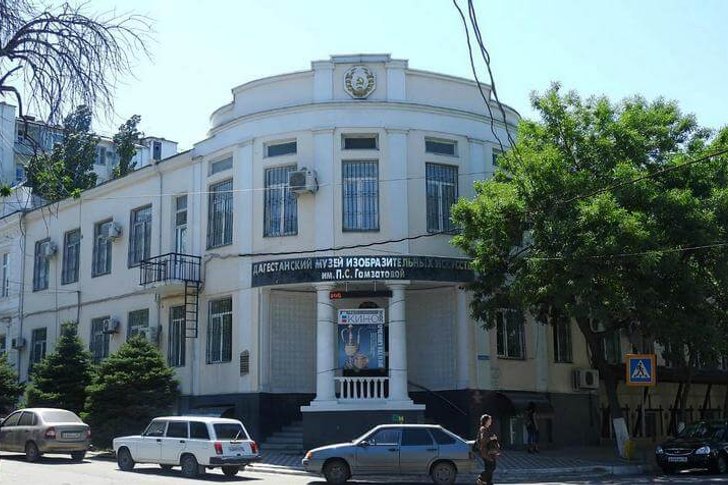
Museum of the History of the City of Makhachkala
The youngest museum in the city opened in 2007. The exposition occupies the building of the memorial complex. The difference from other museums is the lack of own funds at the time of foundation. Gradually, the halls were filled with artifacts donated by the Institute of Archeology, paintings received from local artists, simply gifts from the townspeople. The project covers many topics related to Makhachkala.

Monument to the "Russian teacher"
The installation and opening ceremony took place in 2006. The name is unofficial and given by the appearance of the monument. It depicts a woman with a book in her hand and leaning on a globe. The height of the figure is about 10 meters. Massive beams close over her head. A wide staircase leads to the monument. The composition is dedicated to ethnic Russians who came to Dagestan to help develop the republic.
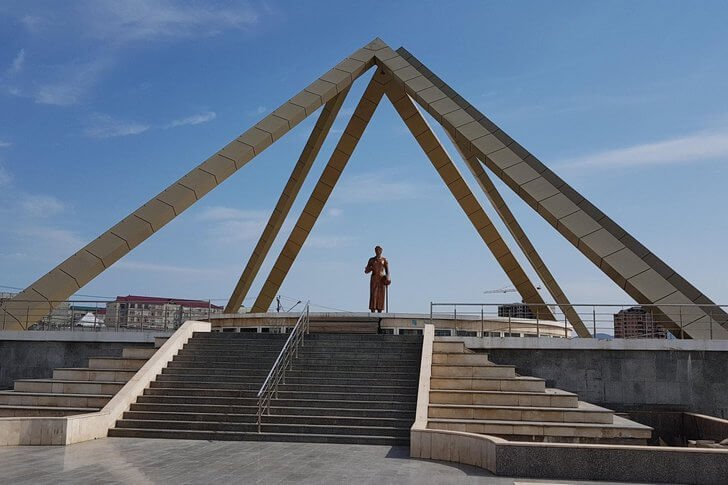
Monument to Makhach Dakhadaev
Until 1921, Makhachkala was called Port-Petrovsk. The current name of the city was formed in honor of the Bolshevik Magomed-Ali Dakhadaev, who bore the pseudonym Makhach. A monument to this public figure was erected in 1971 near the railway station. The equestrian sculpture was erected on a high and wide pedestal. Not so long ago, it was painted gold, which caused controversy at the highest level.
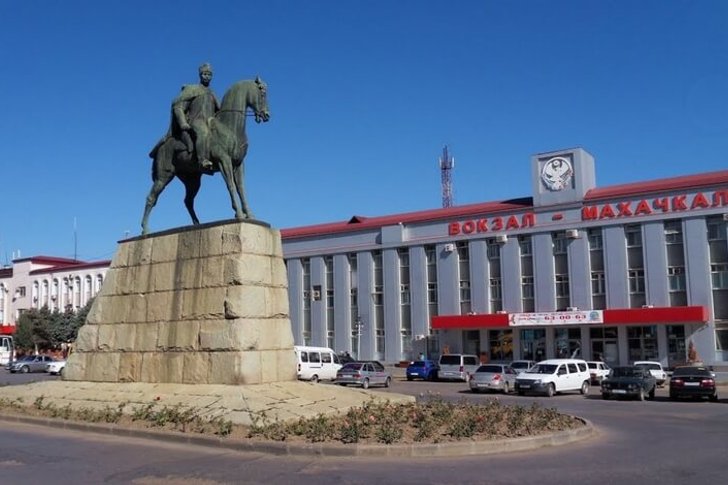
Barkhan Sarykum
It is located 18 km from the city. Its name is translated from Kumyk as "yellow sand". A piece of the desert is amazing already because it appeared among the mountains. Its length is 12 km, its width is about 4 km, and its height is within 250 meters. The features of the terrain and climate led to the appearance of certain species of fauna characteristic of Central Asia. Scientists attribute the appearance of the dune to the centuries-old blowing of sand from the rocks.
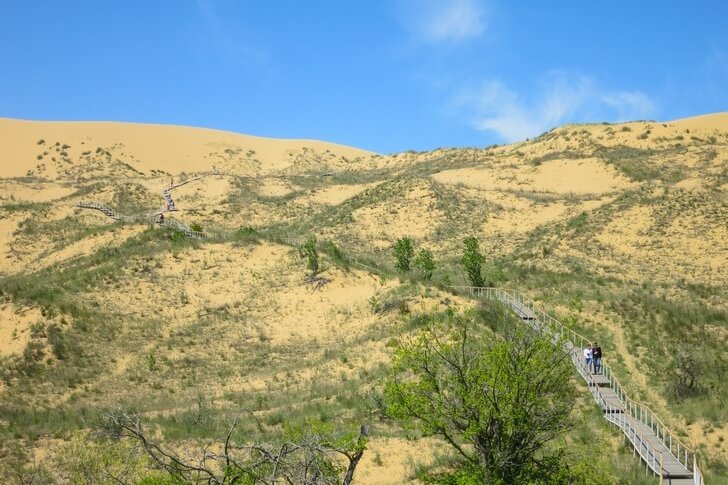
Tarki-Tau
This hill stretches along Makhachkala. The name translates as "narrow mountain". Its length is about 12 km, and its width reaches 5 m. The highest point - the peak of Tiktyube has a height of 725 meters. From here you have a breathtaking view of the area. On the slope there is a convenient observation deck. It can be reached by car. The area is covered with forests, and the number of species of trees and shrubs is impressive.
